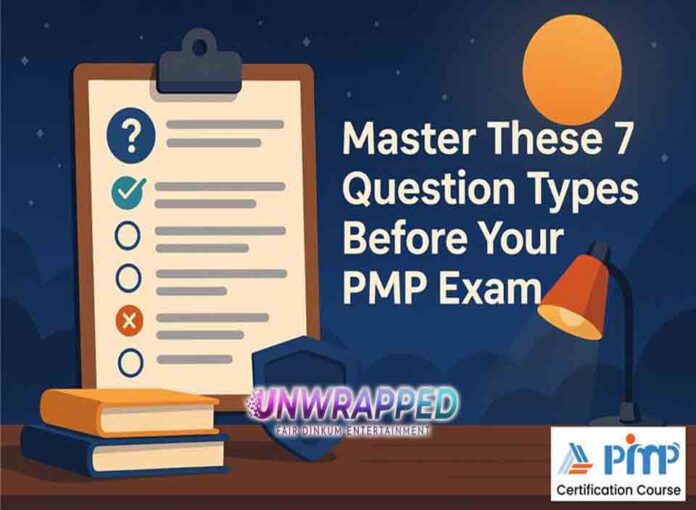So, you’ve decided to go after the PMP badge. But here’s something most people don’t discuss: what if your biggest challenge isn’t the knowledge, but the way it’s tested? The PMP Certification is known for its tough, no-nonsense assessment style. And it’s not just what you know, it’s how you respond under pressure.
Those tricky PMP Exam Questions can twist a straightforward concept into something you second-guess. Ever felt confident about a topic, then froze when the question was thrown in a scenario? Let us break down the question types you need to master before the test day.
Table of Contents
- What to Expect from the PMP Exam Format
- Conclusion
What to Expect from the PMP Exam Format
Knowing the topic is only one aspect; understanding the question structures is equally crucial. Every test assesses your ability to reason differently and can affect your time management in an exam. Before sitting your PMP exam, you should become comfortable with the following primary question types:
- Multiple Choice Questions
On the surface, these are the most common and straightforward questions. There will be a question and four choices; just one of which is right. The catch is that all four options sound reasonable. The key is to remove distractions. Know your definitions, grasp process groups, and watch for words like “always” or “never” that could cause a statement to be incorrect. Here, time management is essential. If you are stuck, mark the question and proceed.
- Multiple Response Questions
Though it looks like a multiple-choice question, this kind has a twist. You will have to choose two or three correct responses instead of one. These challenges probe depth. They sometimes center on practical uses where more than one action or result is appropriate. Knowing the precise number of accurate answers needed is crucial. Usually, this is specified explicitly in the question. Choosing only one correct response from two will not get any points.
- Matching Questions
Matching questions are usually found in knowledge-area-to-process mapping or role-to-responsibility pairings. Given two columns, you will be asked to match objects from one side to the other. These are helpful in testing conceptual clarity and basic understanding. For example, matching documents with their process groups or roles with their duties in Agile teams. Here, visual memory and repetition greatly help. During your preparation, make flashcards to strengthen these links.
- Hotspot Questions
Hotspot questions call for choosing a particular section of an image or graphic. You can be prompted to click on the appropriate zone from a risk matrix, project schedule, or chart. Usually, these concern how one interprets visual data. You could choose the high-risk quadrant in a matrix or find where a schedule delay shows on a Gantt chart. Get used to reading diagrams and visual aids. These can be a nice break from the typically text-heavy questions if well-prepared.
- Drag and Drop Questions
You will be dragging objects into their proper location, like organizing phases in a workflow or grouping various project components. This style challenges your sense of logical sequencing and framework. You can be asked to arrange tools under Planning vs Executing or order the steps in the Change Control Process. Knowing the sequence instead of memorizing it helps here. You will do great if you realize why one action follows another.
- Fill-in-the-Blank Questions
These questions require you to input the correct word or phrase without reference to any answers. They sometimes address formulas or terminology. You may be asked to find a word from the PMBOK Guide or compute Earned Value. You need to know your formulas by heart and learn manual computation to be ready for anything.
- Situational Questions
These are the bread and butter of the PMP exam and call for critical thinking. Situational questions present a scenario and ask what the project manager should do. They challenge your capacity for contextual application of knowledge.
Though you will have to pick the best one depending on PMI’s framework rather than your own experience, often more than one solution feels right. Risk management, stakeholder management, change requests, and dispute resolution are common themes.
Conclusion
The PMP exam tests not just knowledge but also its application. Knowing the types of questions you will encounter helps you to focus your approach and avoid second-guessing on the day. Knowing the structure helps one be confident in multiple-choice, recognizing distractions, and applying logic in drag-and-drop. If you want to improve your preparation, consider PMP Training, which will guide you through the theory and the question techniques.










